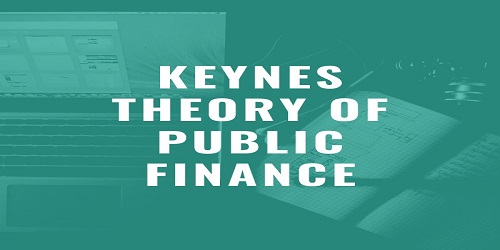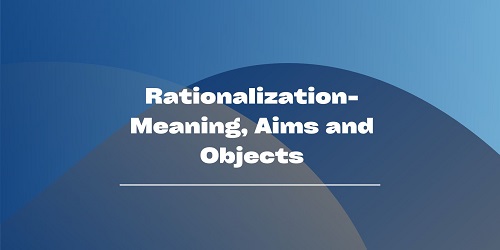How Adverse Effects of Deficit Financing can be Reduced:
To avoid the adverse effects of deficit financing, there are some who advocate fixing the limit of deficit financing in the light of-
- Likely growth of the economy.
- The growth of the primary sector and its requirement of credit.
- The suppressed inflation in the economy.
- The balance of payment situation.
There can, of course, be a safe limit to deficit financing, but it is not possible to fix it precisely. Moreover, it is difficult to find out a formula for determining the safe limit of deficit financing. However, it can safely be concluded that deficit financing of the magnitude mentioned above is clearly not desirable.
There are two ways in which budgetary deficits can be covered or deficit financing can be reduced and thereby adverse effects of deficit financing can be minimized. One is to raise more receipts either by additional tax revenues or raising the net returns from the goods and services sold by the Government or increasing Government drafts on domestic savings or raising more domestic loans. Secondly, increasing the volume of foreign loans for securing additional domestic receipts by the Government for offsetting its deficits.
But, all these are double-edged weapons, the anti-inflationary effect of which could be offset by the fuelling effect they have on the inflationary process. For instance, additional taxation on commodities imposed whether through customs or excise, or sales tax, has resulted in a rise in prices. Additional revenues are no doubt raised by additional indirect taxation, but against this, is the rise in price they stimulate, thus offsetting the very object behind additional taxation, namely reducing deficit financing for the purpose of preventing a rise in prices.
The same effects are seen when additional resources are raised by increasing administrated prices or prices which are charged for goods and services which are sold by Government or regulated by the Government.
However, an increased draft by Government on domestic savings does not have this adverse effect, provided the loans raised are not financed by bank credit, and provided it does not have an adverse effect on the supply of domestic savings available to the private sector for a positive increase in the production of the required consumption or intermediate or capital goods. Thus, for minimizing the effects of deficit financing budget deficits should be covered through market borrowings by the Government.
Restrictions on Credit- The other instrument used for fighting inflation on the demand front is the restriction of bank credit. But, Bank credit can be used for productive activity, for antisocial hoarding of commodities, or for speculation. The last two add to the inflationary process and it is necessary to stop the use of bank credit for these purposes i.e., anti-social hoarding or speculation.
Increase in Production of Public Sector- The other arm of anti-inflationary acts on supply management. The government should make its utmost effort to increase the production of its owned public enterprises as well as give incentives to increase production in the private sector. Emphasis should be laid to increase the production of food grains, raw materials, and the bulk of consumer goods. This increases the supply of goods and will ultimately dampen the inflationary effects.
Reduction in Unproductive Expenditure- Besides, the government should curtail its unproductive public expenditure which is inflationary in nature, and increase its productive expenditure which is inflation dampening. Moreover, productive expenditure should be incurred on quick-yielding projects, since, even the productive expenditure can be inflationary in nature on long-gestation projects as these create additional demand which is not matched by a pari-passu increase in the supply of wage goods. Hence, resources mobilized through deficit financing should be used for raising food output or stepping up the production of consumer goods industries.
Finally, it can be said that the best method to reduce the adverse effect of deficit financing is to reduce the magnitude of deficit financing and ideally to eliminate it altogether.









Comments (No)